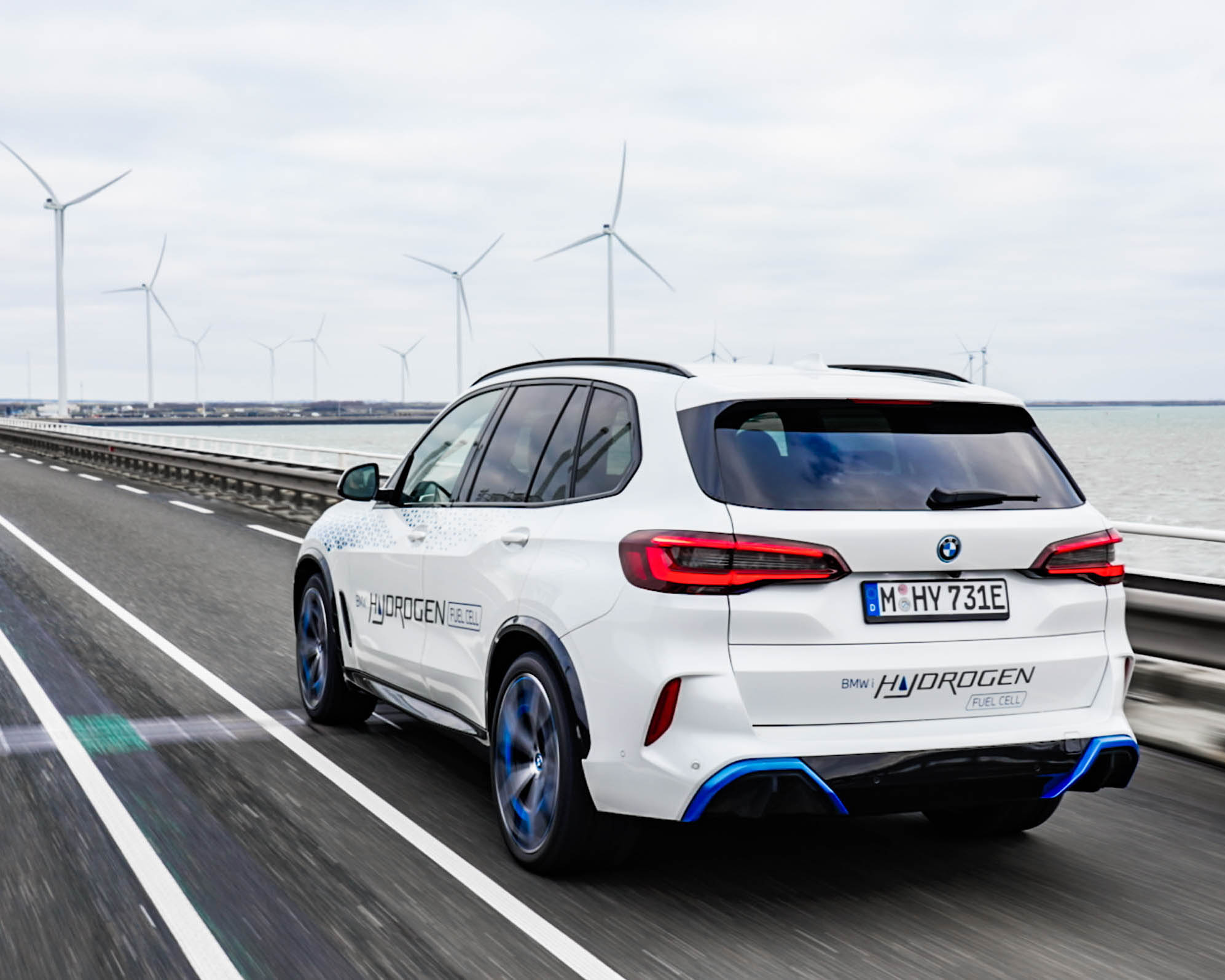
As a leading supplier of hydrogen storage solutions, NPROXX supported the BMW Group in developing the hydrogen fuel cell system for the BMW iX5 Hydrogen in different stages, with the clear goal of delivering a hydrogen vessel for the onboard hydrogen storage system.
The BMW iX5 Hydrogen features two vessels that store the hydrogen to power the Fuel Cell Electric Vehicle (FCEV). NPROXX is responsible for delivering one of these vessels, which is fitted in the middle tunnel of the car and holds 4kg of hydrogen. The other vessel with 2kg of hydrogen is located below the rear seats of the vehicle. Together, these two vessels can therefore store 6kg of hydrogen, making it one of the largest hydrogen storage capacities for a passenger car.
The NPROXX solution is one of the first 700 bar vessels to meet the new R134 standard for FCEVs, which came into effect last year. “It also had to meet additional requirements of the BMW Group and undergo an extensive testing program,” explains Frank Otremba, Manager H2 System Development for NPROXX. “One of the main challenges was making the vessel’s polymer liner, as the BMW Group required a specific type of polyamide instead of the usual HDPE. We therefore had to adapt our manufacturing method to overcome issues and ensure the vessel’s durability.”
Another crucial aspect was the vessel’s fire protection system. All vessels are equipped with thermal pressure safety release devices to ensure safety in case of a fire incident. But the BMW Group additionally required an improved fire resistance of the vessel itself. NPROXX developed a special coating solution for the vessel to meet this requirement and further improve hydrogen vessel safety.
As always, overcoming these challenges has proved really useful and interesting for NPROXX. Otremba: “We can use this new knowledge in our other development projects, and of course offer this new product and fire coating to other customers as well, for example in trucks, buses and trains. And that’s a huge advantage for us.”
The development of the BMW iX5 Hydrogen highlights some of the advantages of FCEVs over battery electric vehicles (BEVs). FCEVs can offer a higher range and shorter refuelling times compared to BEVs. The BMW iX5 Hydrogen takes about 4 minutes to refuel and provides a range in excess of 500 kilometres.
“We are of course aiming for larger vessels for bigger vehicles, too” says Philipp Breuer, Sales Manager for NPROXX. “As well as trucks, we also have a lot of train and bus customers, and complete fuel tank delivery systems for these really large vehicles are also in our scope.” A similar vessel for heavy duty trucks could even have a diameter of 700-750 millimetres, and so store significantly more hydrogen, necessary for long-haul heavy duty transport.
NPROXX also sees a lot of potential in the hydrogen passenger car market, especially for larger and more expensive vehicles. The company believes that passenger cars can take advantage of the expanding refuelling infrastructure for larger vehicles, such as buses and trains. The development of the BMW iX5 Hydrogen demonstrates that the technology is ready, and the next step is to make it more affordable and scalable.
Overall, the partnership between NPROXX and the BMW Group to develop the hydrogen tank system for the BMW iX5 Hydrogen showcases the valuable contribution of their collaboration – highlighting the potential of hydrogen as a clean and efficient alternative to traditional fuel sources in the automotive industry.
To learn more about hydrogen transport, read our article on the global advancement of hydrogen infrastructure: refuelling stations. And to find out more about NPROXX’s work in general, read about our capabilities or contact us directly for more information.